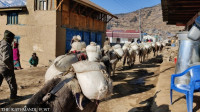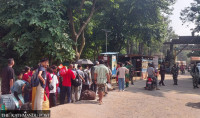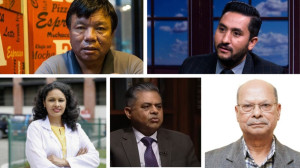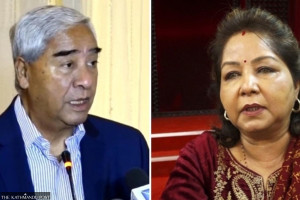National
High court judges selection irks Nepal Bar Association
Judicial Council picked only nine lawyers as it appoints 39 high court judges.
Post Report
The Judicial Council on Wednesday picked 39 high court judges, mostly from the career district court judges, leaving Nepal Bar Association, the umbrella body of lawyers, dissatisfied.
A meeting of the council led by Chief Justice Bishowambhar Prasad Shrestha promoted 26 district court judges to high court positions. Four joint secretary-level officials under judicial service too have been selected as high court judges. Only nine lawyers found their place on the list. They will join their service after taking the oath from the chief justice within a few days.
Though the council maintained community- and province-wise inclusion while selecting the judges from among the lawyers, only males dominantly from the Khas Arya group have been promoted to the higher court from the district. Not a single district judge promoted to the high court is a woman, Madheshi, Tharu or Muslim. Only two of the 26 are from janajati communities.
Out of the total 39, only three—less than 8 percent—are women while the share of janajatis and Tharus is 12 percent and 2 percent, respectively. Not a single judge selected on Wednesday is Madheshi or Muslim.
The five-member Judicial Council led by the chief justice has the authority to nominate judges and justices. Law minister, senior most Supreme Court justice and two advocates picked one each by the Nepal Bar Association and the government are its members.
Those who have worked as a district judge or as a senior advocate for a minimum of five years are qualified to be nominated as the high court judges, as per the Constitution of Nepal. Similarly, those who have worked as an advocate for 10 years or those as a researcher or an academician in the legal field for five years or worked in the capacity as a gazetted officer for five years under the judicial group too are qualified for the posting.
The council's decision to give career judges more priority in selecting judges has antagonised the bar association. Against the recent practice of including over a third of the lawyers in the new judges appointed, the council has limited lawyers’ share to just 22 percent this time.
Out of 80 high court judges appointed in January, 2017, 27—33 percent—were lawyers. While 37 of them were the district court judges, 16 were the joint secretaries under the judicial service.
Gopal Krishna Ghimire, president of the bar association, said they were quite dissatisfied with the working style of the Judicial Council. The association has summoned senior advocate Ram Prasad Shrestha, a member of the council representing the lawyers, to discuss the appointments and amendments to the council’s regulations, Ghimire added.
The council in September revised the regulations, changing the order of precedence of the judges. The amendment published in the Nepal Gazette on September 20 states that the chief registrar of the Supreme Court would be ranked right under the chief judge of the high court if s/he is nominated as the high court judge. The council last week appointed Tek Bahadur Kunwar, the apex court chief registrar as the high court judge.
Ghimire said the regulation makes the judges appointed from the lawyers as second-class judges as the career judges get the upper ranks. In the hierarchy, all those appointed in the high court from the lawyers category, on Wednesday, are ranked lower to those promoted from the district court judges or picked from the judicial service.
“The Bar Association has a history of leading different movements for the rule of law,” said Ghimire. “It seems it has to launch one more protest for the structuring of the entire judiciary.” He said the association has formed a committee to suggest the overall restructuring. The extended meeting of the association slated for May will endorse the report and devise the strategies for protest, he said.




 18.75°C Kathmandu
18.75°C Kathmandu













